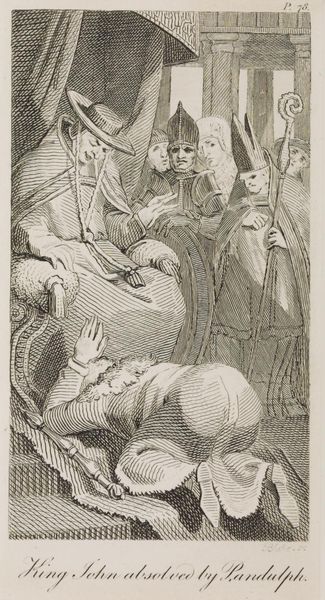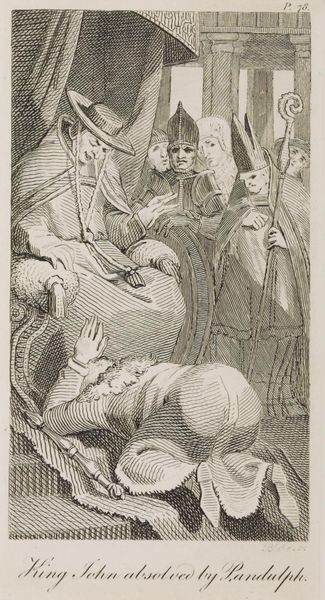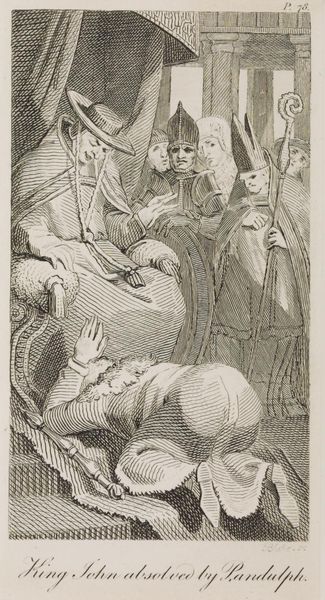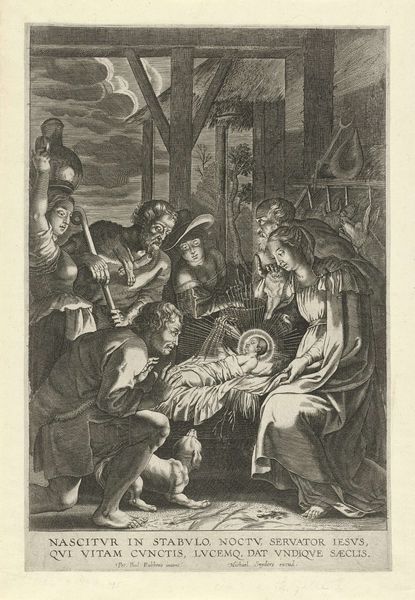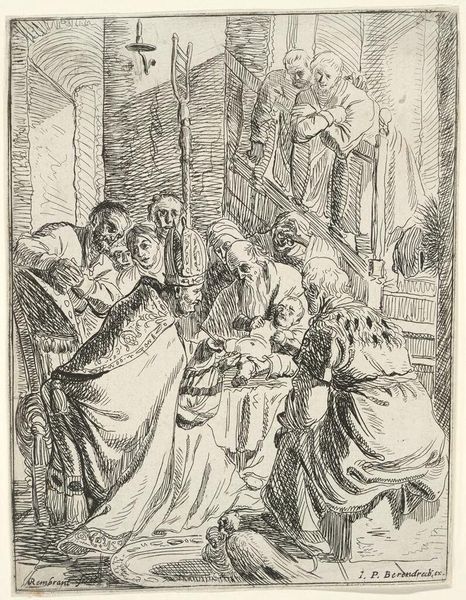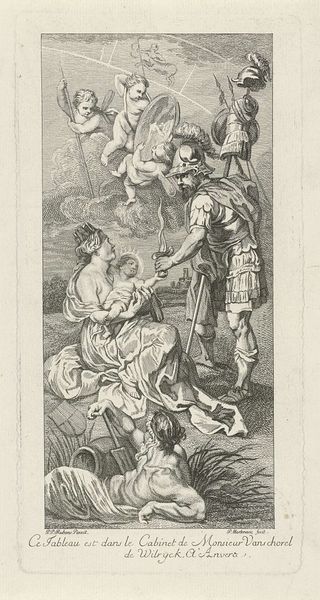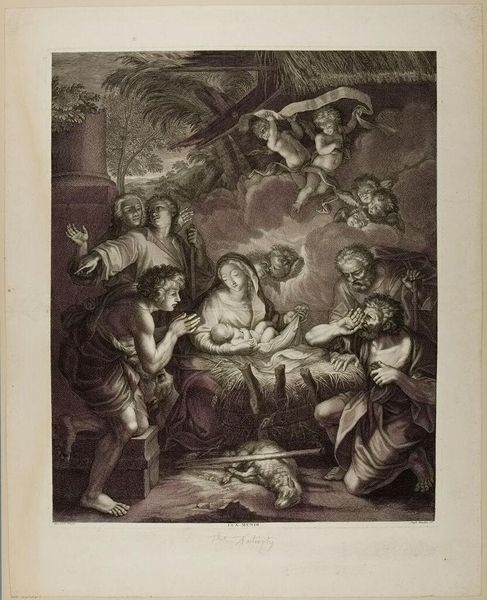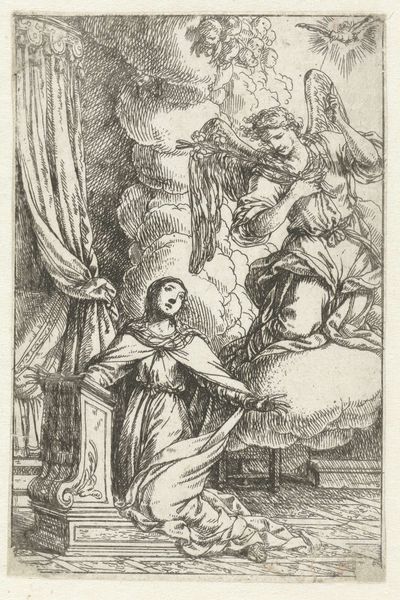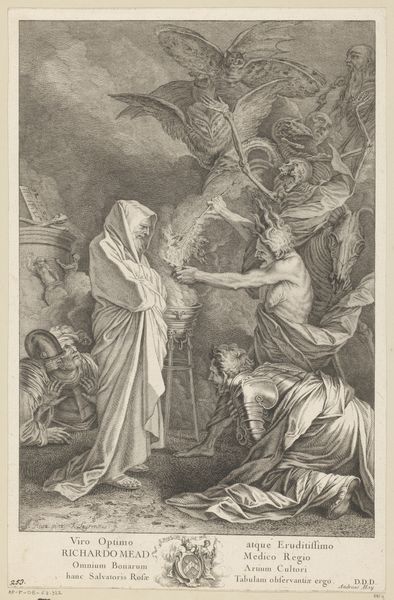
Dimensions: image: 147 x 82 mm
Copyright: NaN
Editor: So, this is William Blake's engraving, “King John absolved by Landulph," after Henry Fuseli. There's such a sense of power imbalance in this image. What historical context shaped Blake's interpretation here? Curator: Blake's engagement with history was deeply political. He's less interested in historical accuracy and more in using the past to critique contemporary power structures. How might this image speak to issues of religious authority and social control in Blake's time? Editor: It’s interesting to consider this as a commentary on power beyond just a historical depiction. Is there anything else that strikes you about Blake's specific choices in this image? Curator: The way Blake uses line to create a sense of tension and unease is really striking. The subservient position of King John, juxtaposed with the imposing figure of Landulph, visually reinforces the critique of unchecked authority. It makes me question where our loyalties should lie. Editor: I'm starting to see how Blake uses history to ignite a dialogue about power structures, past and present. Curator: Exactly. It's not just history; it's a call to action.
Comments
tate 6 months ago
⋮
http://www.tate.org.uk/art/artworks/blake-wat-tyler-and-the-tax-gatherer-after-henry-fuseli-t06588
Join the conversation
Join millions of artists and users on Artera today and experience the ultimate creative platform.
tate 6 months ago
⋮
Blake first became friendly with the Swiss-born painter Fuseli in about 1787. They both belonged to the group of artists and writers who gathered around the radical publisher Joseph Johnson. One of this group, Mary Wollstonecraft (no.20) fell passionately in love with Fuseli. In 1789 Fuseli was sympathetic to the aims of the French Revolution. However, after the Terror of 1793-4 in France, he saw little difference between the despotism of kings and that of the factions which replaced them. Blake, however, remained a 'Liberty Boy' to the end. The subject of this print, Wat Tyler, a blacksmith (like Blake's figure of Los) who led a rebellion against King Richard II, may reflect Fuseli's democratic leanings. Gallery label, August 2004
